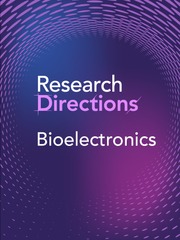Context
While bioelectronic devices hold great promise in revolutionizing medicine and healthcare, they also face numerous challenges that must be overcome (you can add some references from above here). This includes improving the longevity and safety of these devices, ensuring their ethical use, and ensuring their compatibility with the human body and the environment.
Potential solutions are still being developed and researched but are yet to be fully integrated into the current technology. In addition, there is still a lack of understanding about the long-term effects of these devices on the human body and the environment. When designing and developing devices, we should ensure they are safe and non-toxic while protecting the privacy and security of the data collected.
These are potential solutions to tackle these challenges facing the development of long-lasting and efficient bioelectronic devices. Improving the design, using advanced electronic components, for example CMOS but not exclusively, improving the power supply, and reducing biofouling and scarring are some potential solutions that are being researched to overcome these challenges. However, more work is needed to find a balance between efficacy, biocompatibility, and long-term durability. To overcome the challenges facing the development of bioelectronic devices, researchers need to explore various approaches such as we are calling for developments in the areas of:
-
1. Advanced materials: What are the biocompatible materials that are durable, flexible and can withstand the harsh conditions inside the body and the environment? How do we ensure that these are affordable, are easily scalable, or not difficult to integrate into the devices?
-
2. Improved power supply: With the growing need of power for stimulation or recording purposes, how do we develop more efficient and stable power sources? How do we ensure that rechargeable batteries and energy harvesting methods provide enough power? Will they require additional components and lead to bulkier devices?
-
3. Design optimization: How do we improve the design of bioelectronic devices to reduce heat generation, minimize fouling, and ensure stability and longevity? Researchers should also be aware that the optimization of design may limit the device’s functionality or increase its complexity, making it harder to manufacture.
-
4. Encapsulation methods: How do we develop advanced encapsulation methods to protect the devices from the body’s immune response and prevent biofouling? How do we make sure these do not reduce the device’s performance, limit its functionality, or increase the complexity of its design?
There are short-term and long-term aspects for any potential solutions, and there may be many that we have not included here. So, with an eye on implementation and scalability maybe we ought to explore how to address the needs in two stages, immediate and long term.
How to contribute to this Question
If you believe you can contribute to answering this Question with your research outputs, find out how to submit in the Instructions for authors (https://www.cambridge.org/core/journals/research-directions-bioelectronics/information/author-instructions/preparing-your-materials). This journal publishes Results, Analyses, Impact papers and additional content such as preprints and “grey literature.” Questions will be closed when the editors agree that enough has been published to answer the Question so before submitting, check if this is still an active Question. If it is closed, another relevant Question may be currently open, so do review all the open Questions in your field. For any further queries, check the information pages (https://www.cambridge.org/core/journals/research-directions-bioelectronics/information/about-this-journal) or contact this email ([email protected]).
Competing interests
All authors declare no competing interests.



